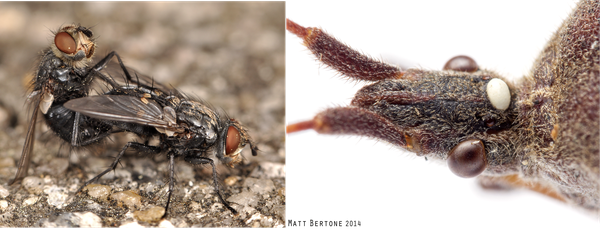Eco Bed Bug Exterminators Dc for Beginners
Eco Bed Bug Exterminators Dc for Beginners
Blog Article
Indicators on Eco Bed Bug Exterminators Dc You Should Know
Table of ContentsThe Best Strategy To Use For Eco Bed Bug Exterminators DcEco Bed Bug Exterminators Dc Can Be Fun For EveryoneThe Of Eco Bed Bug Exterminators DcAn Unbiased View of Eco Bed Bug Exterminators DcRumored Buzz on Eco Bed Bug Exterminators Dc
Since chemicals are toxic, they are also potentially dangerous to people, animals, other organisms, and the environment. Individuals who use chemicals or consistently come in call with them have to understand the loved one poisoning, prospective health and wellness impacts, and preventative procedures to minimize exposure to the items they utilize. Risk, or risk, of utilizing pesticides is the capacity for injury, or the level of risk associated with utilizing a chemical under a given collection of conditions.
Applicators can reduce or nearly remove direct exposure-- and thus lower threat-- by complying with the label guidelines, utilizing personal safety clothing and devices (PPE), and managing the chemical effectively. More than 95 percent of all pesticide direct exposures come from facial direct exposure, mostly to the hands and forearms. By using a set of unlined, chemical-resistant gloves, this kind of direct exposure can be nearly gotten rid of.
The damaging results that occur from a single direct exposure by any path of access are described "intense impacts." The four courses of exposure are dermal (skin), breathing (lungs), oral (mouth), and the eyes. Severe poisoning is identified by checking out the dermal toxicity, breathing poisoning, and dental poisoning of guinea pig.
Eco Bed Bug Exterminators Dc for Dummies
Acute toxicity is measured as the amount or concentration of a toxicant-- the a.i.-- needed to eliminate half of the animals in a test populace. This procedure is usually revealed as the LD50 (deadly dose 50) or the LC50 (deadly concentration 50). Furthermore, the LD50 and LC50 values are based on a solitary dose and are videotaped in milligrams of chemical per kg of body weight (mg/kg) of the test animal or in parts per million (ppm).
The reduced the LD50 or LC50 value of a pesticide product, the better its poisoning to people and animals. Pesticides with a high LD50 are the least harmful to humans if utilized according to the instructions on the item label. The chronic poisoning of a chemical is established by subjecting guinea pig to long-lasting exposure to the active ingredient.
The chronic poisoning of a pesticide is harder than intense poisoning to identify through laboratory analysis. Products are categorized on the basis of their loved one intense poisoning (their LD50 or LC50 values). Pesticides that are classified as highly poisonous (Poisoning Category I) on the basis of either oral, dermal, or breathing poisoning should have the signal words DANGER and toxin printed in red with a skull and crossbones symbol plainly presented on the front panel of the bundle label.
The acute (solitary dosage) dental LD50 for pesticide items in this group varies from a trace total up to 50 mg/kg. For instance, direct exposure of a few decreases of a material taken by mouth might be deadly to a 150-pound person. Some chemical products have simply the signal word threat, which informs you absolutely nothing regarding the acute toxicity, just that the product can cause extreme eye damages or severe skin inflammation
How Eco Bed Bug Exterminators Dc can Save You Time, Stress, and Money.
In this classification, the intense oral LD50 varieties from 50 to 500 mg/kg. A tsp to an ounce of this product might be deadly to a 150-pound person (bed bug treatment). Pesticide products identified as either slightly hazardous or reasonably nontoxic (Toxicity Classifications III and IV) are required to have the signal word CAUTION on the chemical label

All pesticide poisoning worths, including the LD50, can be discovered on the item's Product Safety and security Data Sheet (MSDS) - bed bug spray. Pesticide tags and MSDS can be gotten from stores or manufactures. Additionally, many products also have visit their website info that can be located on the net. The signs and symptoms of pesticide poisoning can range from a light skin inflammation to coma or perhaps death.
Individuals additionally differ in their sensitivity to different degrees of these chemicals. Some individuals may reveal no response to an exposure that may create extreme illness in others (bed bug treatment). As a result of possible health worries, pesticide individuals and trainers have to identify the typical indicators and signs of chemical poisoning. The effects, or symptoms, of pesticide poisoning can be generally defined as either topical or systemic.
Eco Bed Bug Exterminators Dc Can Be Fun For Everyone
Dermatitis, or swelling of the skin, is accepted as the most frequently reported topical result connected with chemical exposure. Signs and symptoms of dermatitis array from reddening of the skin to rashes and/or blisters. Some individuals have a tendency to cough, wheeze, or sneeze when subjected to pesticide sprays. Some people react to the strong odor and irritating impacts of petroleum distillates used as carriers in pesticide products.
This sign typically subsides within a few minutes after an individual is eliminated from the direct exposure to the irritant. However, a reaction to a chemical product that causes a person not just to sneeze and cough but additionally to create serious acute respiratory signs and symptoms is more probable to be a real hypersensitivity or allergy.
Systemic results are fairly various from topical effects. They frequently take place away from the initial factor of contact as a result of the chemical being absorbed into and dispersed throughout the body.
Report this page